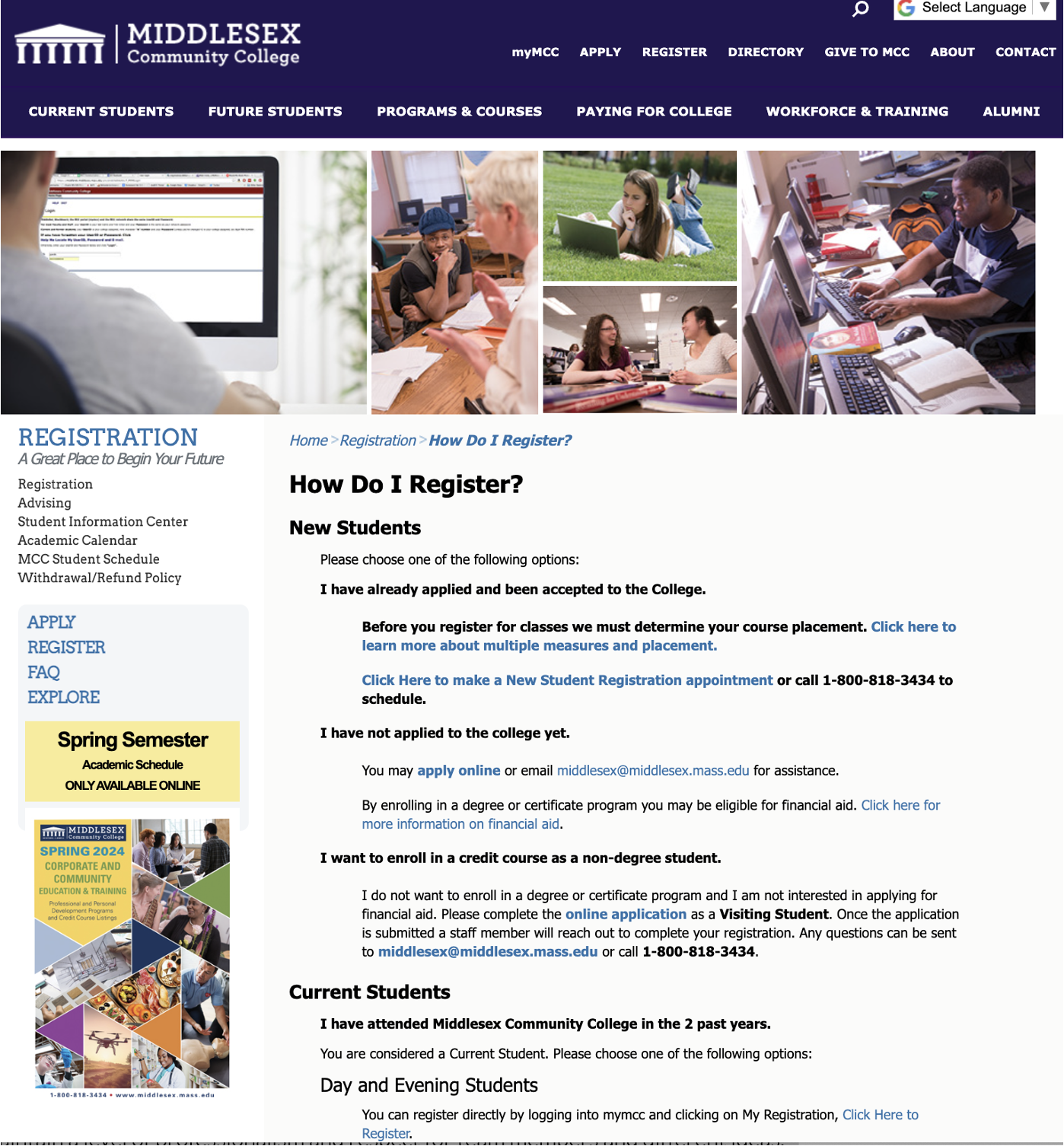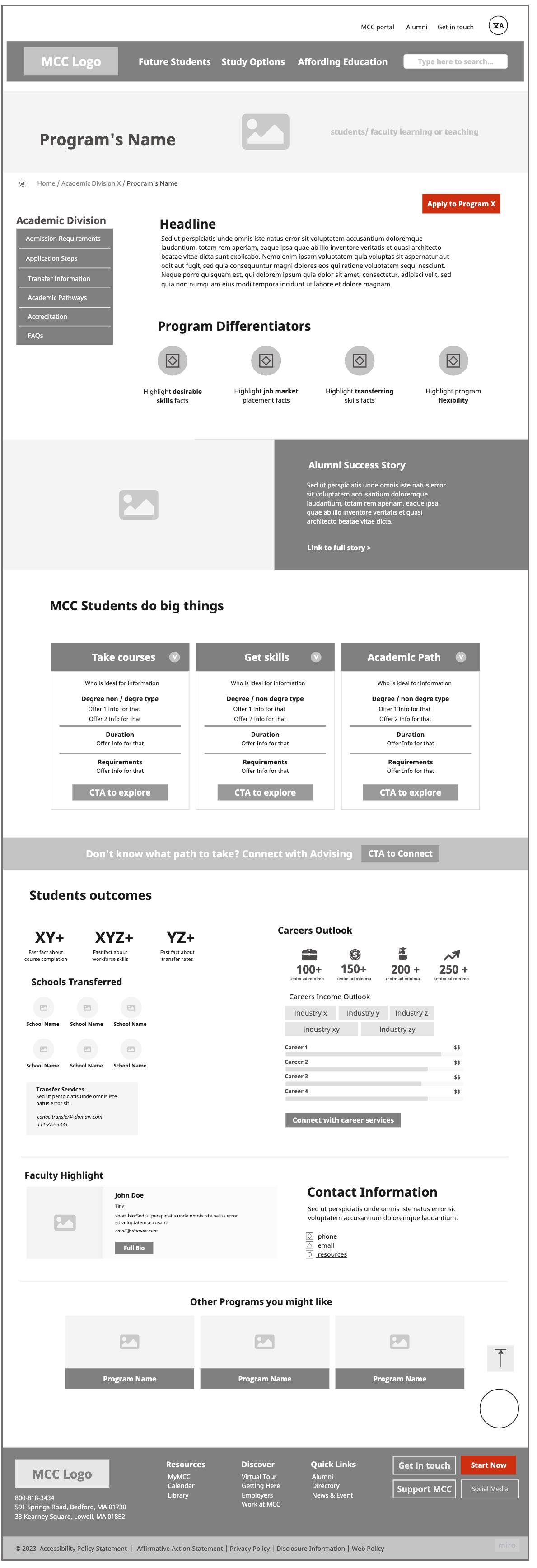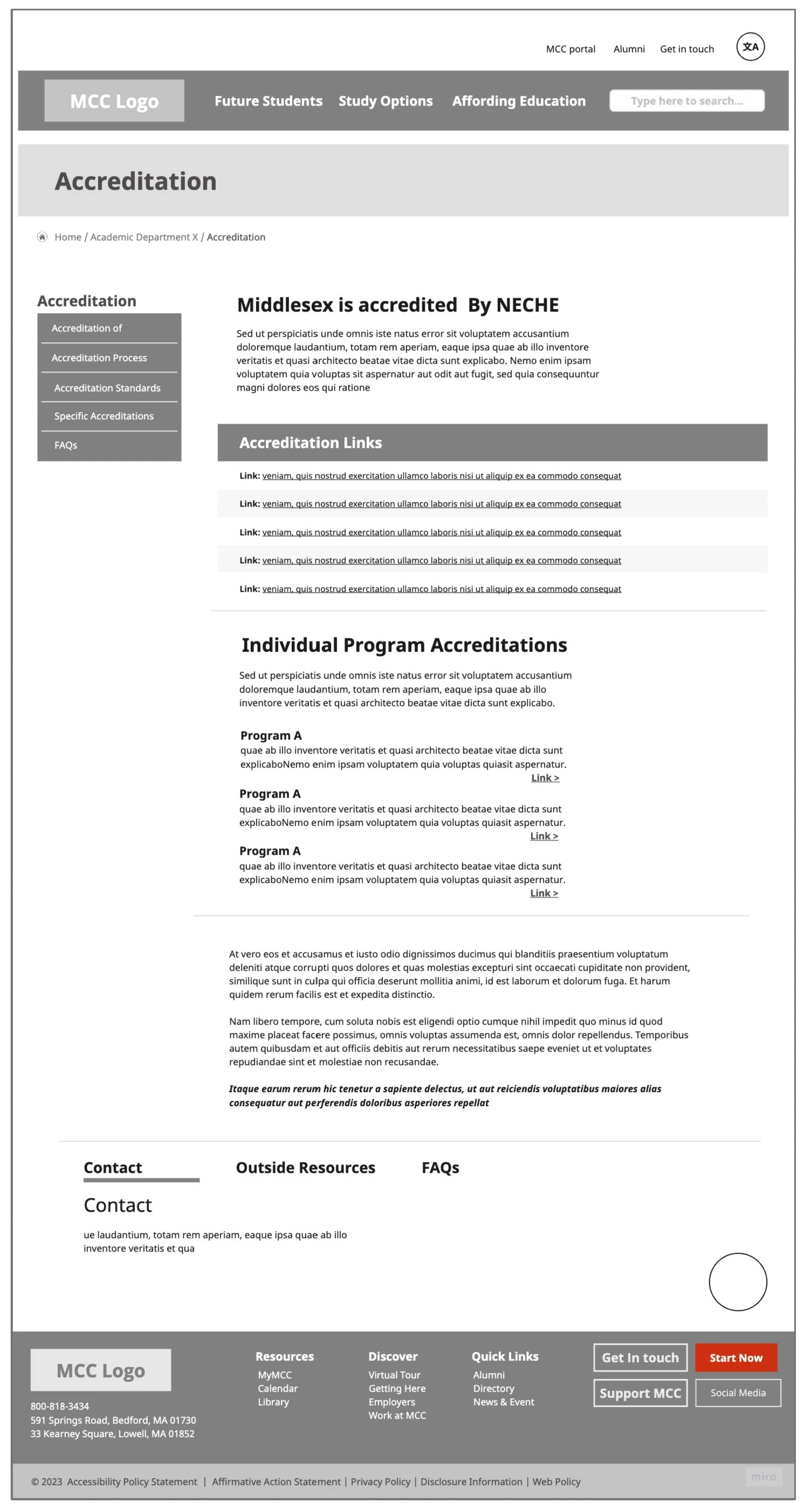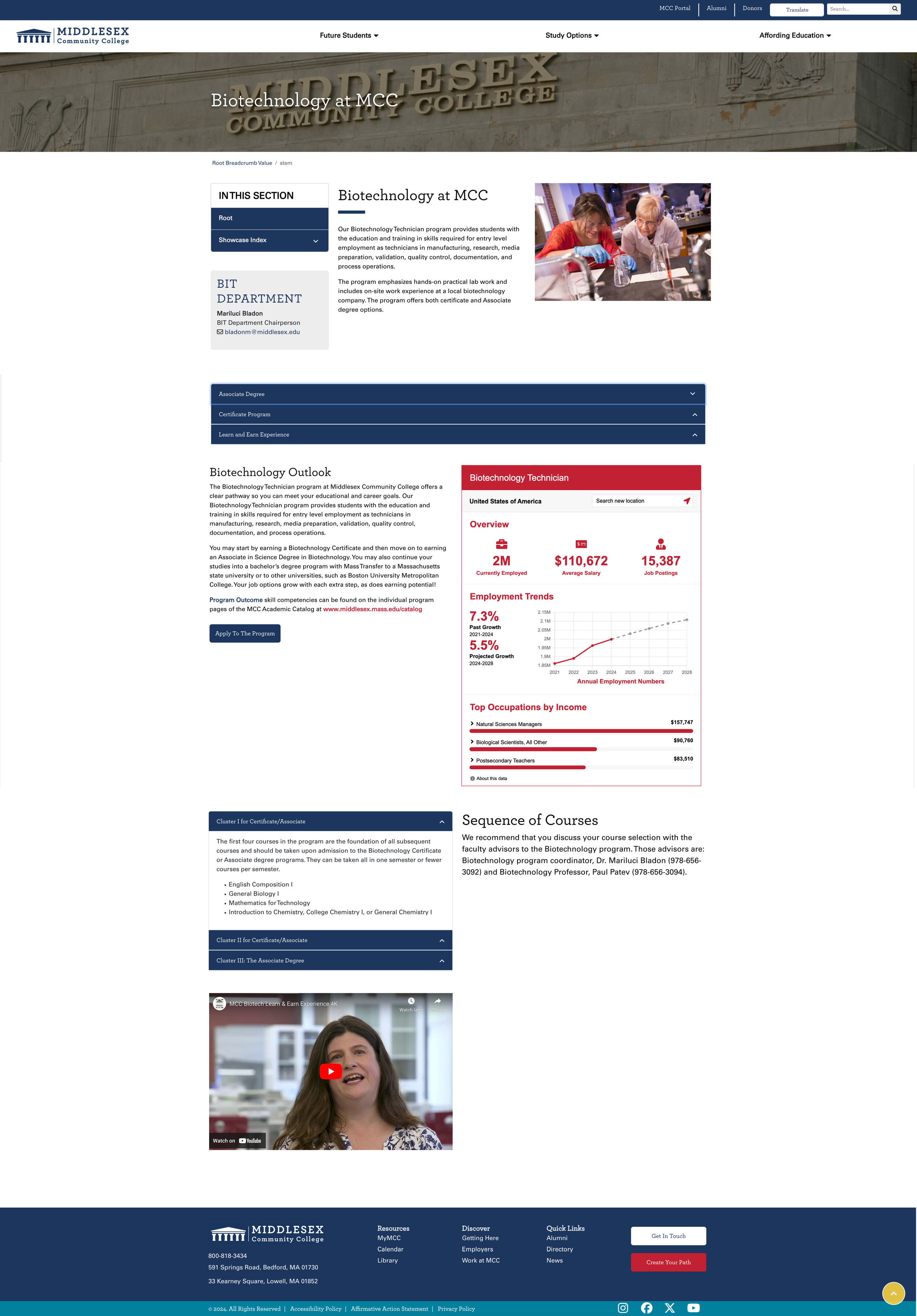Middlesex Community College

Project Summary
Middlesex Community College's website was a digital dinosaur. After over a decade of patchwork fixes and content overload, the website was mostly used as a library of information, and needed a major overhaul. Bogged down with usability issues, accessibility barriers, and poor SEO, the site made it difficult for students, faculty, and staff to find the information they needed.
By focusing on user-centered design, accessibility, and SEO, I transformed the website into a modern, intuitive, and inclusive platform that truly reflects the college's values and serves the diverse needs of its community.
My Role
As the Lead UX Designer, I was responsible for guiding cross-functional teams through every phase of the project, from initial research and planning to design and implementation. I worked closely with content strategists, developers, and college stakeholders to ensure that every decision we made was aligned with our goals.Problem
Internal audience focusOverwhelming content volume, yet users can't find what they needPoor Navigation and UsabilityLack of Alignment with College Mission and ValuesPoor SEO, making content invisible to search enginesPoor Mobile Experience
Goals
Content lignment with College MissionPrioritize forward-facing contentProvide easy navigationInclusive content that meets accessibility standardsClean and modern lookImprove SEO scoreClear and optimized Information Architecture
The Process
Website Audit > Research & Ideation > Prototype & Design > Testing > Delivery
Website Audit
The audit identified 25 areas where MCC could make changes and improve the user experience. The main issues found were:
Student Stories & Diversity needed better integration.
Mobile Experience needed significant enhancement.
Navigation (Information Architecture) needed a complete rebuild focused on user engagement.
The website's search engine visibility was low.
Too much content was intended for internal users.
Inconsistent tone and messaging across the site.
Lacking alignment with the college’s brand and mission.
Poor user experience overall
Pages served both external and internal audiences, leading to confusion.
Approximately 75% of content was outdated, internally focused, lacked calls to action, or was used merely as a historical reference.
Research & Ideation
User research revealed that students' primary frustrations with college websites include difficulty finding major-specific information, unclear admissions guidance, and complex navigation.
They also struggle with limited details on program and career information, lengthy online forms, and a lack of engaging media like campus photos and videos.
Persona Study
To ensure the new design aligns with the diverse student audience, I teamed up with various college departments to develop these loyal persona profiles. This collaborative effort allowed us to gather insights from different perspectives on who our students were. We also relied on data from our enrolled students to further refine these personas, ensuring they were grounded in real experiences and needs.
We found our audience to be diverse, encompassing first-generation students, dual enrollment participants, health students, adult learners, seniors (60+), and traditional students. Each group with its own set of challenges and needs.
Prototype & Design
Based on our findings, I refined my design by focusing on an information architecture that delivers personalized content tailored to our diverse audiences, while adhering to best usability practices.
Using tools like Miro and Figma, I created wireframes that clearly conveyed the vision for our new pages. This approach led to positive and valuable feedback from the college community and vendors.
Delivery
The final product was a recruitment-focused website that reflected the College’s mission while meeting the needs of users with improved usability and accessibility.
The next step on this project will be redesigning internal content, with a commitment to continuous updates and ongoing user feedback to ensure the site remains effective and relevant.














